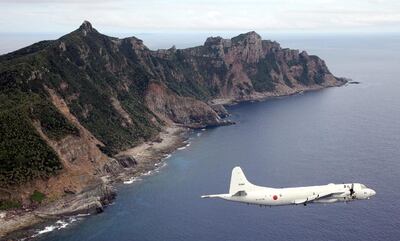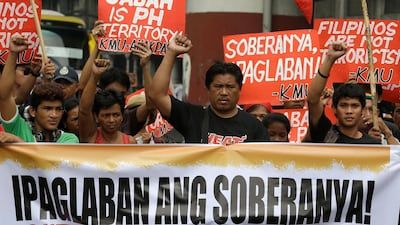Border disputes in Asia still regularly make the news. The face-offs and clashes between Indian and Chinese troops in the Himalayas since May have probably been the most high-profile, as they may have led to scores of deaths on both sides.
A war of words between China and the US over Beijing's claims in the South China Sea has also been escalating, as has the presence in the region of the two countries' navies. Analysts such as Michael Vatikiotis, author of Blood and Silk: Power and Conflict in Modern Southeast Asia, now warn that an accidental collision "could easily result in an unstoppable conflict, given the political dynamics in both Beijing and Washington".
Most recently an ancient spat between the Philippines and Malaysia was revived by Teodoro Locsin Jr. The Philippine Foreign Secretary wrote on Twitter: “Sabah is not in Malaysia if you want to have anything to do with the Philippines." This reference to the Malaysian state on the north-east of the island of Borneo prompted his Malaysian counterpart, Hishammuddin Hussein, to respond: “This is an irresponsible statement that affects bilateral ties. Sabah is, and will always be, part of Malaysia.” Mr Locsin then said he would be summoning the Malaysian ambassador for a telling off and continued to make further provocative remarks.

Now, this may seem an arcane and somewhat baffling dispute. But its history is worth explaining briefly because some of the key points are also to be found in many other Asia territorial arguments.
Firstly, this goes back to colonial and even pre-colonial times when today’s states either did not exist or did so in very different forms. In the 19th century the sultanate of Sulu stretched from the western Philippines to a part of what is now the Malaysian state of Sabah. This latter territory was taken over by the British North Borneo Company in 1878, a transaction which the Philippines, as the successor state to the sultanate, deems a lease, whereas the Malaysian interpretation of the relevant document is that it was a cession.
Either way, the wording translated into English makes it clear that this was to be “in perpetuity”, and a UN mission found that a majority of the local inhabitants of what by then was a British colony were in favour of joining the new country of Malaysia when it was established in 1963. But the Philippines has never accepted this, initially breaking off diplomatic ties with its new neighbour and in 1967 planning an attempt – subsequently aborted – to destabilise and take over Sabah.

Relations between the two countries recovered and have been warm for decades. As President Rodrigo Duterte’s spokesman Harry Roque put it last week: “This matter should not affect our ongoing bilateral ties. It has not affected it in recent years, and we will continue to have healthy bilateral relations with Malaysia despite the issue of Sabah.”
Mr Roque was attempting to pour oil on the waters troubled by Mr Locsin. At the same time, however, he still reasserted the claim unequivocally, and no one serious about power in the Philippines will ever give it up.
It would be easy to consider the issue either irrelevant or ridiculous, with at least five men claiming to rule a sultanate that no longer exists. But it remains a tool of easy populist rabble-rousing in the Philippines. In 2013, this led to a group of over 200 militants calling themselves the "Royal Security Forces of the Sultanate of Sulu and North Borneo" landing in the district of Lahad Datu, Sabah, and to a confrontation in which nearly 60 of the invaders and 10 Malaysian security personnel were killed.

Many other instances of contested lands or islands in Asia are similarly mired in histories that are themselves disputed, such as China's and Japan's claims to the Diaoyu / Senkaku islands, Japan and Russia over the Kuril islands, between Armenians and Azerbaijanis in the Nagorno-Karabakh region, and as mentioned above, between China and India in Arunachal Pradesh and Ladakh. Although efforts to resolve them have been made in the past, they are now mostly intractable, since – as in the Philippines – the political cost to any leader who attempts to compromise or give any ground is just too high.
There is a way out, which India's Prime Minister Narendra Modi hinted at in a speech he made in Ladakh last month. "Friends," he said, "the age of expansionism is over, this is the era of development."
Joint development in disputed areas is a way to park disputes and benefit both parties. This is what Malaysia and Thailand have long done in over 7,000 square kilometres of the Gulf of Thailand, where they exploit the seabed in partnership despite their overlapping claims – which they have not given up. This has been so successful that the dispute itself has become a non-story.
Both countries are members of the Association of Southeast Asian Nations, and their conduct is true to the association's unofficial motto of "agreeing to disagree without being disagreeable". But this is an approach relevant across the continent.
It may well be true that some of the disagreements have their origins in the actions of imperialists from far away who had insufficient knowledge of or care for the lands whose boundaries they were delineating. But it is not much use blaming Henry McMahon, who proposed the line of demarcation between Tibet and India at the Simla Convention in 1914, today. McMahon is long gone. The dispute remains, and it is for current leaders to deal with – and they must.
For if Asia is to remain the growth engine of the world, it cannot waste any more time being divided against itself. There are some arguments that can never be resolved. Recognising that and finding a way to move on could be the answer to quite a lot of problems.
Ladakh – Last bastion of Tibetan Buddhist culture
Sholto Byrnes is a commentator and consultant in Kuala Lumpur and a corresponding fellow of the Erasmus Forum








